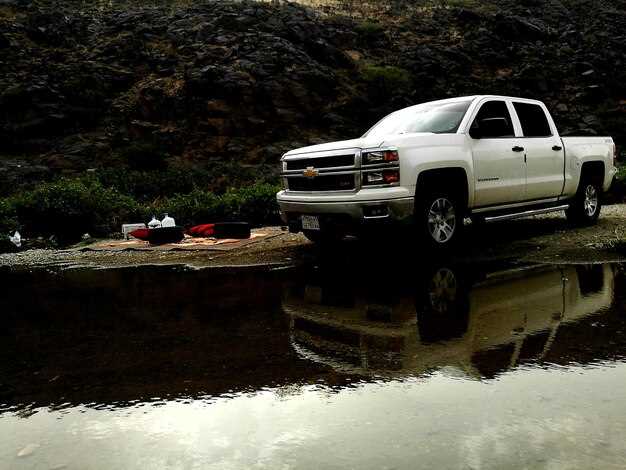Jeep Cherokee vs Jeep Grand Cherokee – what’s the difference?


The Jeep brand is synonymous with adventure, durability, and a passion for exploration. Among its impressive lineup of SUV models, the Jeep Cherokee and Grand Cherokee stand out as two popular choices for drivers seeking off-road capabilities and everyday comfort. While they share the same nameplate and a commitment to quality, these vehicles cater to slightly different needs and preferences.
Understanding the key differences between the Jeep Cherokee and the larger Grand Cherokee is essential for potential buyers. The Cherokee offers a compact, agile experience, making it well-suited for urban environments and light off-road excursions. In contrast, the Grand Cherokee boasts a more spacious interior and enhanced towing capacities, appealing to those who require greater versatility for travel and adventure.
This article will delve into the specific features and specifications that differentiate these two SUV models. From performance and design to technology and safety, we will explore how each vehicle aligns with various lifestyles and driving needs, ultimately guiding you in making a well-informed decision.
Performance Specifications: What Sets Each Model Apart?

The Jeep Cherokee and Grand Cherokee are both popular SUVs that cater to different needs and preferences. Understanding their performance specifications is crucial for potential buyers. Here’s a comparison that highlights the key differences:
- Engine Options:
- Jeep Cherokee: Typically features a range of engine options, including a 2.4-liter four-cylinder engine and a more powerful 3.2-liter V6. The four-cylinder provides adequate acceleration for daily driving, while the V6 offers enhanced performance for off-roading and towing.
- Jeep Grand Cherokee: Offers a broader selection of engines. Options often include a 3.6-liter V6 and a robust 5.7-liter HEMI V8. For high-performance enthusiasts, there are also powerful models like the Trackhawk, equipped with a supercharged 6.2-liter V8 engine.
- Towing Capacity:
- Jeep Cherokee: Has a towing capacity ranging between 2,000 to 4,500 pounds, depending on the engine choice and configuration. This makes it suitable for lighter loads such as small trailers or boats.
- Jeep Grand Cherokee: Exhibits superior towing capabilities, with a maximum rating of up to 7,200 pounds. This allows it to handle larger trailers and heavy equipment, making it ideal for those who need significant towing power.
- Drivetrain:
- Jeep Cherokee: Offers both front-wheel drive and all-wheel drive configurations. The all-wheel drive system enhances traction, especially in adverse weather conditions or light off-road scenarios.
- Jeep Grand Cherokee: Features more advanced all-wheel drive systems, including the Quadra-Trac and Quadra-Drive systems, which provide superior performance in off-road situations and better handling on highways.
- Fuel Efficiency:
- Jeep Cherokee: Generally offers better fuel efficiency, with EPA estimates ranging around 22-31 mpg depending on the engine and configuration, making it a more economical choice for daily commutes.
- Jeep Grand Cherokee: While fuel efficiency varies by engine, models with larger engines tend to have lower mpg ratings, ranging from 14-26 mpg. However, the power you gain with a V8 can be worth the trade-off for some buyers.
- Overall Performance:
- Jeep Cherokee: Best suited for drivers seeking a compact SUV that balances performance with functionality, excelling in urban environments and light off-road situations.
- Jeep Grand Cherokee: Designed for enhanced performance, off-road capability, and luxury. Therefore, it holds up well in rugged terrains and high-speed conditions, appealing to those looking for a more versatile and powerful SUV.
In conclusion, the Jeep Cherokee and Grand Cherokee have distinct performance specifications that cater to different driving needs. The Cherokee is ideal for those prioritizing efficiency and urban driving, while the Grand Cherokee focuses on power and off-road capabilities, making it the better choice for adventurers and those requiring substantial towing capacity.
Interior Comfort and Technology: Features for Different Lifestyles
The Jeep Cherokee and Grand Cherokee each cater to diverse lifestyles, offering unique interior comfort and technological features that enhance the driving experience.
For those who prioritize a compact yet functional design, the Cherokee boasts a cozy interior with ample cargo space, making it ideal for city dwellers and outdoor enthusiasts alike. Its available Uconnect infotainment system features a user-friendly interface with smartphone integration, allowing for seamless access to navigation and entertainment options while on the go.
Conversely, the Grand Cherokee emphasizes luxury and sophistication, with premium materials and spacious seating designed for families and long road trips. The Grand Cherokee offers a higher trim level that includes features like leather upholstery, heated and ventilated seats, and an advanced sound system, catering to those who seek a more refined experience.
In terms of technology, both models provide state-of-the-art safety and convenience features. The Cherokee’s standard safety suite includes adaptive cruise control and lane-keeping assist, making it a practical choice for everyday commuters. Meanwhile, the Grand Cherokee offers additional upscale tech options, such as a rear-seat entertainment system, perfect for keeping passengers engaged during long journeys.
This comparison highlights how each Jeep model is crafted to meet specific needs: the Cherokee excels in practicality and efficiency, while the Grand Cherokee delivers on luxury and spaciousness, making both vehicles appealing for their respective user demographics.
Pricing and Value: Which SUV Offers Better Long-term Benefits?

When considering the Jeep Cherokee and Grand Cherokee, pricing and long-term value play crucial roles in the decision-making process. Both SUVs cater to different segments of the market, which influences their pricing strategies and overall value retention.
The Jeep Cherokee typically comes at a lower starting price compared to the Grand Cherokee, making it an attractive option for budget-conscious consumers. Its smaller size and fewer luxury features help reduce the initial cost, allowing buyers to access the Jeep brand without breaking the bank. However, when assessing long-term benefits, the Cherokee may have limitations in terms of resale value, as it competes more in the compact SUV category, where depreciation can be more pronounced.
On the other hand, the Jeep Grand Cherokee often commands a higher price tag, but this investment may yield better long-term benefits. The Grand Cherokee not only offers more advanced technology and luxury features but also typically retains its value better in the long run. Its larger size and capabilities position it as a more versatile option for families and adventure seekers alike, making it appealing to a broader audience. Furthermore, the higher quality materials and enhanced performance options may contribute to improved longevity and higher resale value.
In conclusion, while the Jeep Cherokee presents a cost-effective entry into the SUV market, the Grand Cherokee often offers better long-term value due to its superior features, versatility, and resale potential. Buyers must weigh their needs and preferences carefully in this comparison to determine which SUV aligns best with their financial goals and lifestyle requirements.
